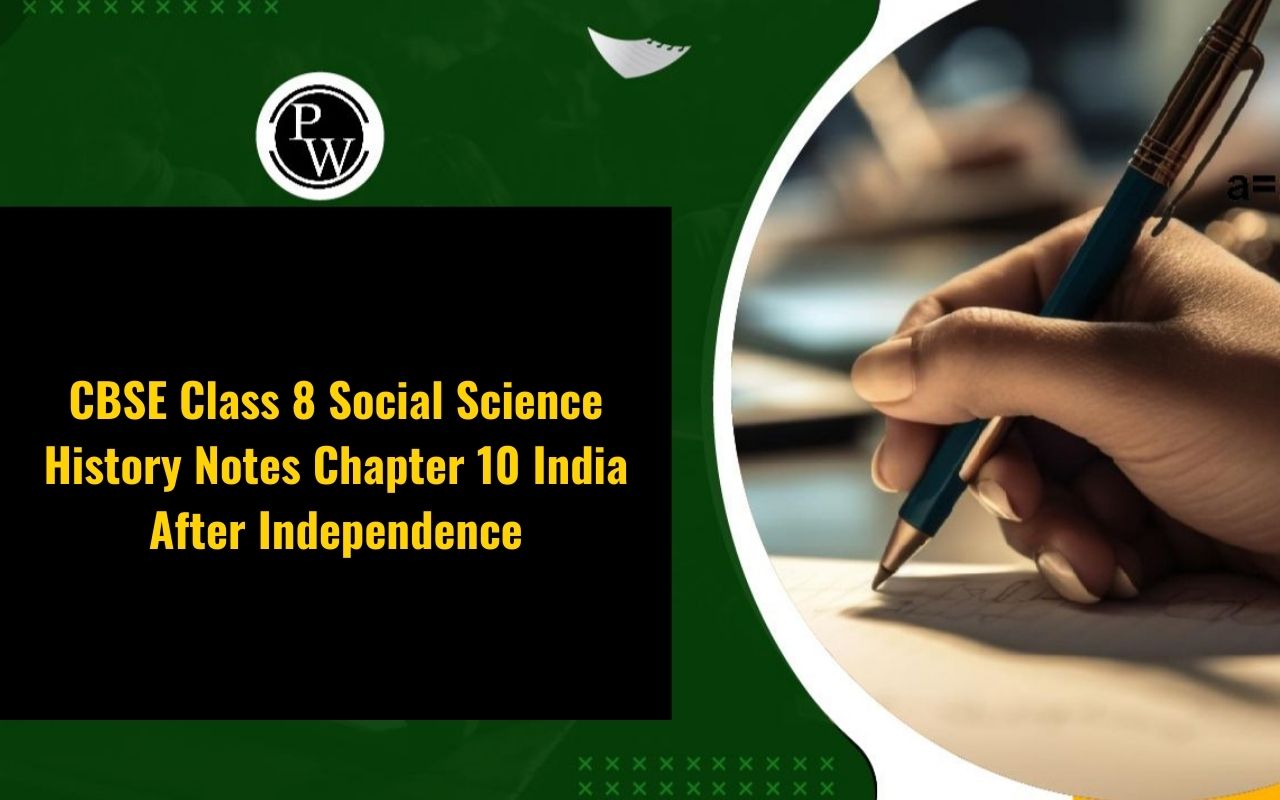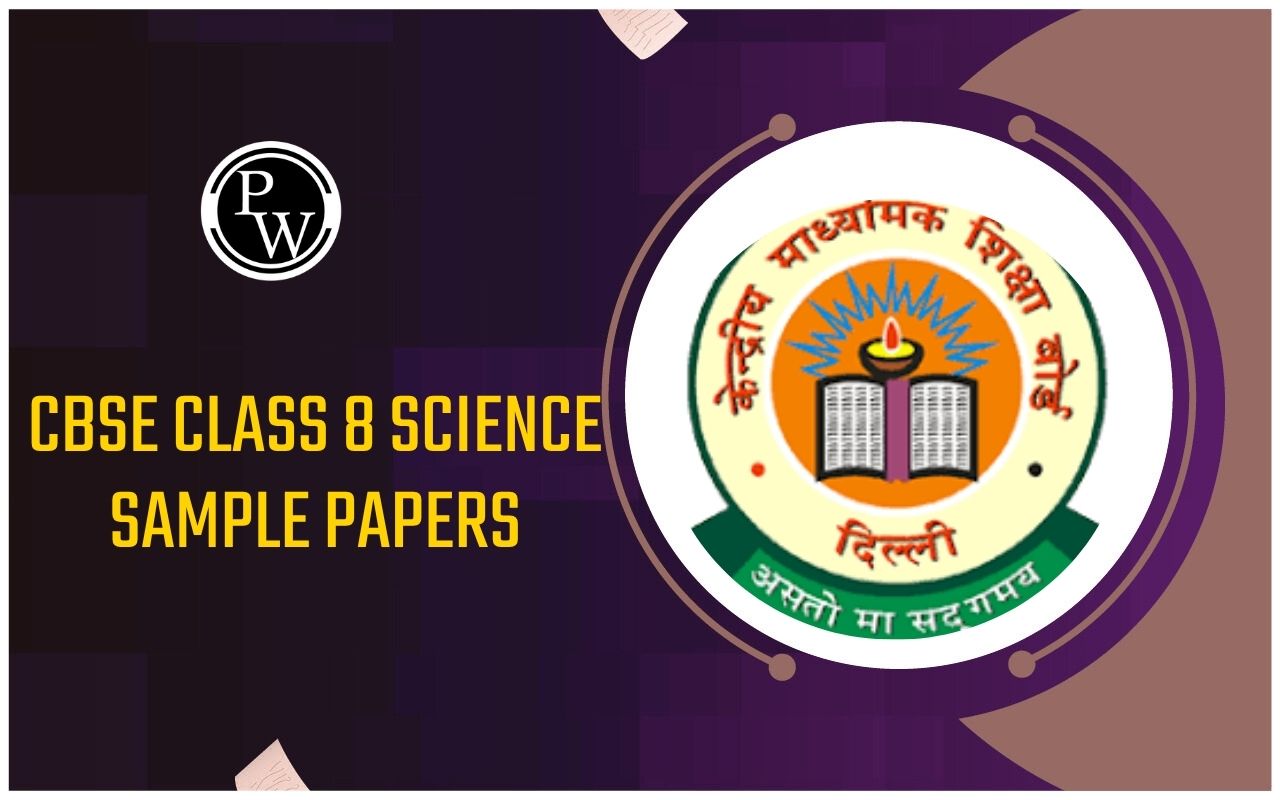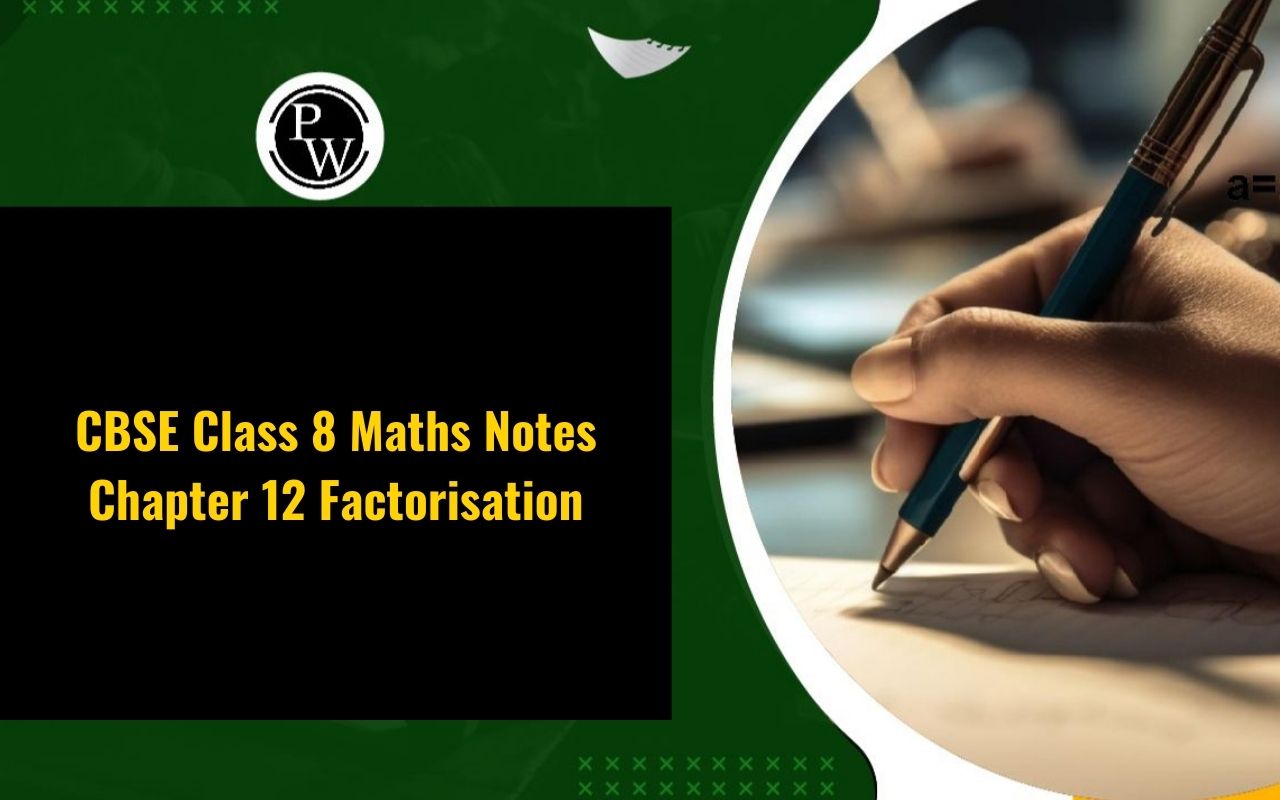

CBSE Class 8 Social Science History Notes Chapter 10: Here are the notes for CBSE Class 8 Social Science History Chapter 10 India After Independence. This chapter provides an in-depth look at the important events and changes that occurred in India following its independence in 1947.
It covers the formation of a new democratic government, the integration of princely states and the adoption of the Indian Constitution which laid the groundwork for the nation's political framework. By studying these topics students gain a detailed understanding of how India navigated the challenges of nation-building and set the stage for its future progress.CBSE Class 8 Social Science History Notes Chapter 10 Overview
These notes for CBSE Class 8 Social Science History Chapter 10 India After Independence are prepared by subject experts of Physics Wallah. They provide a detailed overview of the critical developments in India post-independence. By providing clear and concise explanations of these key events the notes help students understand the foundational steps India took towards building a modern nation.CBSE Class 8 Social Science History Notes Chapter 10 PDF Download
The PDF for CBSE Class 8 Social Science History Chapter 10 India After Independence is available below. It is a valuable resource for students seeking to grasp the key changes and progress made during this transformative period in Indian history. Access the PDF using the link below to enhance your understanding and study effectively.CBSE Class 8 Social Science History Notes Chapter 10 PDF
CBSE Class 8 Social Science History Notes Chapter 10 India After Independence
Here are the CBSE Class 8 Social Science History Notes for Chapter 10 India After Independence which provide a detailed overview of the significant events and developments in post-independence India. These notes cover the challenges faced by the newly independent nation, including the integration of princely states the drafting of the Indian Constitution, and the socio-economic policies implemented for national development.A New and Divided Nation
In August 1947, India emerged as an independent nation, grappling with the immediate challenges of Partition, which had resulted in approximately 8 million refugees entering the country from what became Pakistan. The integration of numerous princely states, each governed by its own maharaja or nawab, into the Indian Union posed a significant challenge. At this juncture, India was not only vast but also deeply divided along lines of caste, religion, language, and region. The majority of its population resided in rural areas, where agriculture was the primary livelihood, dependent on the monsoon. In contrast, urban factory workers lived in overcrowded slums with limited access to essential services such as education and healthcare. The newly independent nation faced the critical task of unity and development, aiming to bridge divides and ensure that economic progress was inclusive, to prevent further discord and promote a harmonious society.A Constitution is Written
Between December 1946 and November 1949, the Constituent Assembly of India, comprising around 300 members, met in New Delhi to draft the Indian Constitution. This monumental task culminated in the adoption of the Constitution on January 26, 1950. A key feature of the Constitution was the introduction of universal adult franchise, granting voting rights to all Indians aged 21 and above, which marked a significant step towards inclusive democracy. The Constitution ensured equality before the law for all citizens, irrespective of caste or religion, and extended these rights to various communities including Sikhs, Christians, Parsis, and Jains. The document also aimed to protect the rights of the poorest and most disadvantaged, reflecting a commitment to socio-economic justice. To balance power, the Constitution established three lists: the Union List for central government responsibilities (e.g., defense and foreign affairs), the State List for state government functions (e.g., education and health), and the Concurrent List for shared responsibilities (e.g., agriculture). Language was another contentious issue. A compromise was reached where Hindi was designated the official language, while English continued to be used in legal and inter-state communications. Dr. B.R. Ambedkar, Chairman of the Drafting Committee, concluded his speech by underscoring that political democracy needed to be complemented by economic and social democracy, acknowledging the complex challenges ahead.How were States to be Formed?
In the 1920s, the Indian National Congress had promised that post-independence, linguistic groups would have their own provinces. However, leaders like Prime Minister Jawaharlal Nehru and Deputy Prime Minister Vallabhbhai Patel were initially opposed to the creation of states based on linguistic lines. The demand for linguistic states gained momentum with various language groups pushing for their own states. The Kannada, Malayalam, and Marathi speakers all sought recognition. The most intense agitation came from the Telugu-speaking areas of the Madras Presidency. Potti Sriramulu's hunger strike, aimed at creating a separate Andhra state for Telugu speakers, highlighted the urgency of the issue. Sriramulu's death on December 15, 1952, spurred action, and on October 1, 1953, the state of Andhra was officially formed, which later became Andhra Pradesh. To address the demands more systematically, the States Reorganisation Commission was established. Its 1956 report recommended restructuring the boundaries to create states based on linguistic majorities, resulting in new states for Assamese, Bengali, Oriya, Tamil, Malayalam, Kannada, and Telugu speakers. The Hindi-speaking regions were divided into several states. This process continued with the bifurcation of Bombay into Maharashtra and Gujarat in 1960 and the division of Punjab into Punjab and Haryana in 1966.Planning for Development
In 1950, the Indian government established the Planning Commission to craft and implement policies aimed at economic development. This initiative introduced a mixed economy model where both the State and the private sector would play crucial, complementary roles in boosting production and creating jobs. The Commission was tasked with determining which industries should be managed by the state and which should be left to the market, ensuring a balanced development across various regions and states. The Second Five-Year Plan, launched in 1956, emphasized the development of heavy industries such as steel and the construction of large dams, with these sectors falling under state control. This approach aimed to build a robust industrial base for the country. However, it faced criticism for not sufficiently addressing agriculture and primary education, areas that some believed were important for comprehensive national development.The Nation, Sixty Years On
On 15 August 2007, India celebrated sixty years of independence, reflecting on its journey as a unified and democratic nation. Contrary to early concerns that it might fragment or face military rule, India remained intact. Despite its democratic framework and constitutional guarantees, challenges such as violence against Dalits, religious clashes, and growing economic disparities persisted. While some regions and groups have thrived with economic development, others continue to struggle below the poverty line. The ideal of equality before the law remains aspirational, with real-life inequalities still prevalent. India’s progress over six decades has been marked by both significant achievements and ongoing issues, illustrating a complex narrative of resilience and continued striving towards its founding ideals.Benefits of CBSE Class 8 Social Science History Notes Chapter 10 India After Independence
- Simplified Content : Designed for Class 8 students the notes present complex historical facts and events in an easy-to-understand format making it easier for students to follow and retain important information.
- Contextual Insight : The notes provide context to the political, social, and economic changes that occurred post-independence, helping students connect historical events with their impact on contemporary India.
- Enhanced Exam Preparation : By summarizing important points and highlighting key themes, these notes are a valuable resource for exam preparation enabling students to review and revise efficiently.
- Foundation for Further Study : The notes lay a strong foundation for future studies in history and social science by covering fundamental concepts and historical developments preparing students for more advanced topics in higher classes.
CBSE Class 8 Social Science History Notes Chapter 10 FAQs
What were the major challenges faced by India immediately after gaining independence?
India faced numerous challenges post-independence, including managing the large influx of refugees due to Partition, addressing the issues of princely states and integrating them into the Indian Union, and dealing with socio-economic divisions among its diverse population.
What was the role of the Constituent Assembly in shaping post-independence India?
The Constituent Assembly played a crucial role in framing the Indian Constitution, which laid the foundation for India’s democratic governance. It was responsible for defining the political structure, including the balance of power between the central and state governments, ensuring equality before the law, and establishing universal adult franchise.
How did the States Reorganisation Commission impact India?
The States Reorganisation Commission, set up in 1953, significantly impacted India by redrawing state boundaries based on linguistic and regional considerations. This reorganization aimed to create more manageable administrative units and address the demands of various linguistic groups, leading to the formation of states like Andhra Pradesh, Tamil Nadu, and Gujarat.
What was the focus of the Second Five-Year Plan introduced in 1956?
The Second Five-Year Plan emphasized the development of heavy industries and infrastructure projects, such as steel production and large dams. It aimed to promote industrialization and economic growth but faced criticism for neglecting agriculture and primary education.
How has economic development influenced the social structure in India since independence?
Economic development has led to significant growth in certain regions and among specific social groups, creating a disparity between the rich and poor. While some areas have prospered with advancements in technology and industry, others continue to struggle with poverty and underdevelopment. This growing inequality has highlighted the need for inclusive development policies.
Talk to a counsellorHave doubts? Our support team will be happy to assist you!

Free Learning Resources
PW Books
Notes (Class 10-12)
PW Study Materials
Notes (Class 6-9)
Ncert Solutions
Govt Exams
Class 6th to 12th Online Courses
Govt Job Exams Courses
UPSC Coaching
Defence Exam Coaching
Gate Exam Coaching
Other Exams
Know about Physics Wallah
Physics Wallah is an Indian edtech platform that provides accessible & comprehensive learning experiences to students from Class 6th to postgraduate level. We also provide extensive NCERT solutions, sample paper, NEET, JEE Mains, BITSAT previous year papers & more such resources to students. Physics Wallah also caters to over 3.5 million registered students and over 78 lakh+ Youtube subscribers with 4.8 rating on its app.
We Stand Out because
We provide students with intensive courses with India’s qualified & experienced faculties & mentors. PW strives to make the learning experience comprehensive and accessible for students of all sections of society. We believe in empowering every single student who couldn't dream of a good career in engineering and medical field earlier.
Our Key Focus Areas
Physics Wallah's main focus is to make the learning experience as economical as possible for all students. With our affordable courses like Lakshya, Udaan and Arjuna and many others, we have been able to provide a platform for lakhs of aspirants. From providing Chemistry, Maths, Physics formula to giving e-books of eminent authors like RD Sharma, RS Aggarwal and Lakhmir Singh, PW focuses on every single student's need for preparation.
What Makes Us Different
Physics Wallah strives to develop a comprehensive pedagogical structure for students, where they get a state-of-the-art learning experience with study material and resources. Apart from catering students preparing for JEE Mains and NEET, PW also provides study material for each state board like Uttar Pradesh, Bihar, and others
Copyright © 2025 Physicswallah Limited All rights reserved.
Get App










